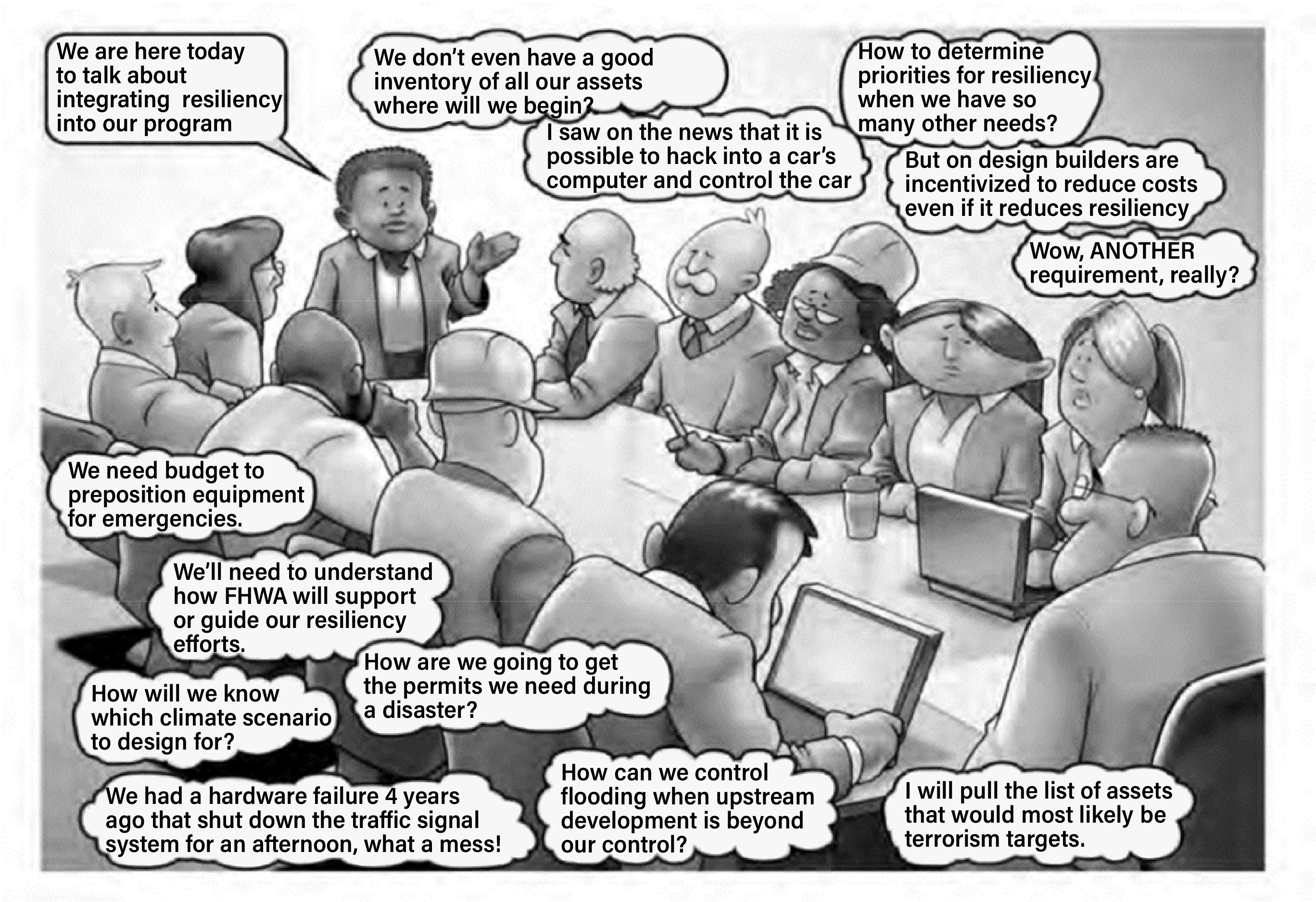
Disaster Management Manual
A manual for practitioners and decision makers!

Disaster Management Manual
A manual for practitioners and decision makers!
The California Department of Transportation (Caltrans) created district Adaptation Priorities Reports that use an indicator-based scoring approach to rank state highway system assets most vulnerable to the impacts of climate change. These reports will identify prioritized assets for detailed facility-level study of climate change and adaptation options. Other factors will also affect final prioritization and adaptations, including route criticality, population served, equity considerations, asset useful life, projects underway, funding availability, and cost considerations’ 1
The development of a method to support investment decisions among multiple options prioritizes disaster management that reflects future climate risk, including such considerations as:
By using this approach, the California Department of Transportation (Caltrans) can capitalize on its internal capabilities to identify projects that increase highway system resiliency.
‘Asset condition is one of the most oft-used surrogates for a resilience metric. The focus of such metrics is on the physical ability of an asset to minimize or forego material disruption or failure. Bridge and asset security resilience metrics are good examples of this (similar indices are found for pavement condition and other asset categories found in a typical transportation agency).’ 2
